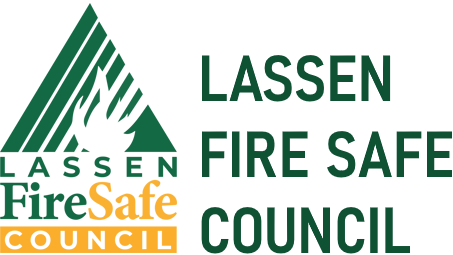Thompson Peak Initiative
| Thompson Peak WUI Fuel Treatments - CCI #122 |
|---|
| Grantor: CAL FIRE |
| Award*: $3,341,389.00 |
| Activities: Hand thinning/ chipping complete, Biomass utilization 90% complete, Mastication 50% complete, CEQA complete, Hazard tree removal 80% complete |
| Remaining Treatment Funds*: $0 |
| Status: Mastication and Hazard tree removal program ongoing. Will complete February 2024 |
| Exp Date: 3/15/2024 |
* Does not include proprietary cost match information
The Thompson Peak Initiative is a community led effort that began when Lassen County residents approached the Lassen Fire Safe Council (LFSC) to aid with hazardous fuels reduction in the Janesville – Milford corridor. The Thompson Peak Initiative (TPI) planning group includes CAL FIRE, the Plumas National Forest, Bureau of Land Management, LFSC, Lassen County, Honey Lake Valley Resource Conservation District, local Fire Districts and the public. TPI monthly meetings have been attended by up to 70 people. Volunteers from the public conducted a petition drive in the fall of 2019 and accumulated over 2,400 signatories in support of the overall TPI project.
The 63,826 acre TPI planning area currently includes potential treatments on approximately 11,000 acres of land managed by the Plumas National Forest (PNF) and 3,000 acres of adjacent private land within the communities of Janesville and Milford. It is located in the southeast quadrant of the greater Susanville, California community where LFSC has completed over 5,000 acres of private land treatments over the last 15 years. The mixed conifer and eastside pine stands within TPI area are overstocked with elevated levels of tree mortality and high fuel loads; these unhealthy forests pose a fire risk on the landscape, are not realizing their full potential to store carbon, and are adversely impacting watershed function (the TPI project area makes up the headwaters for multiple watercourses important to local communities for irrigation and potable water). The TPI area is the highest priority for forest thinning in Lassen County due to high hazardous fuel loads and the great risk to communities from wildfire as past fire behavior has shown, that in this area, fires can move down the mountain, rather than only upslope, because of the diurnal wind flow that travels downslope and pulls air, and fire, into the Honey Lake Valley and out into the Great Basin.
TPI continues LFSC’s landscape scale forest and watershed restoration efforts in Northeastern California. In the Spring of 2020 LFSC was awarded $3,341,389 from the CAL FIRE California Climate Investments (CCI) Fire Prevention (FP) program for treatment of 3,050 public and private acres within the TPI planning area. All LFSC planning funds will be used to complete surveys and environmental documentation needed to implement CCI funded treatments on 3,050 acres and additional USFS acres that are being identified with PNF through a LFSC/PNF Master Stewardship Agreement. When implemented, these treatments will complement completed and planned work on adjacent Susanville Indian Rancheria lands.
The forest and watershed restoration treatments will result in many ecosystem and community benefits including: reduced risk of fire spread on the landscape; reduced threats to Janesville and Milford from large, severe wildfires; improved forest health and resilience; increased carbon sequestration on the landscape; protection and restoration of habitat; improved local socioeconomic conditions; production of renewable energy; improved safety and access for the public and firefighters; protection of watersheds important to communities in the Honey Lake Valley; improved long-term surface water quality; increased quantity of water available for recharging surface and ground waters; reduced risk to wildlife, fish, and native plant habitat from adverse effects associated with catastrophic wildfire; improved resiliency of local communities to climate change; and expansion of completed hazardous fuels work in the area.

